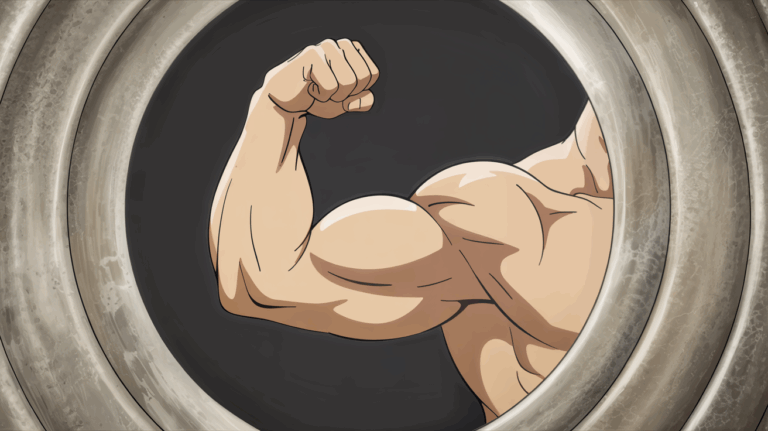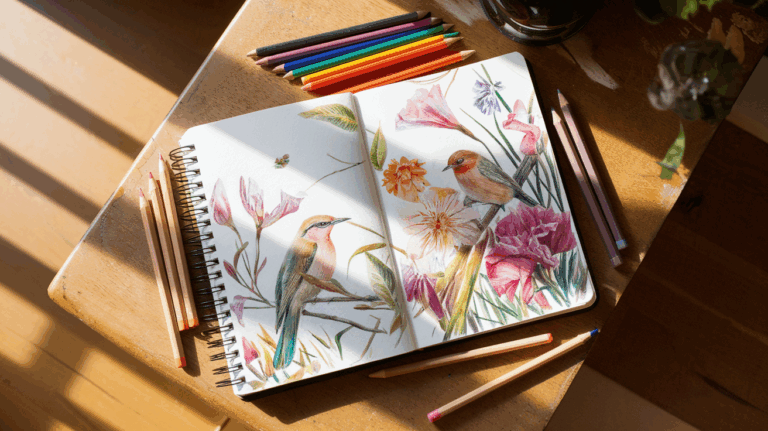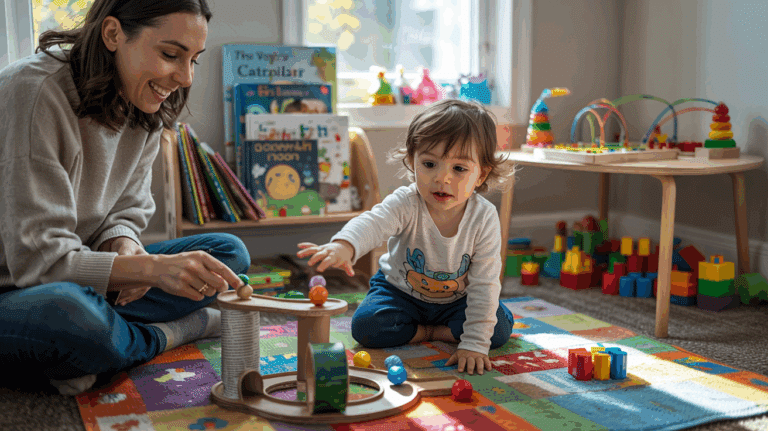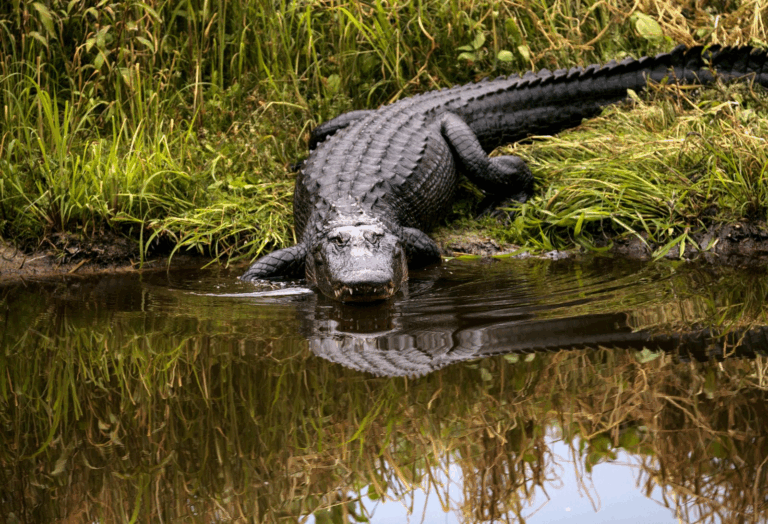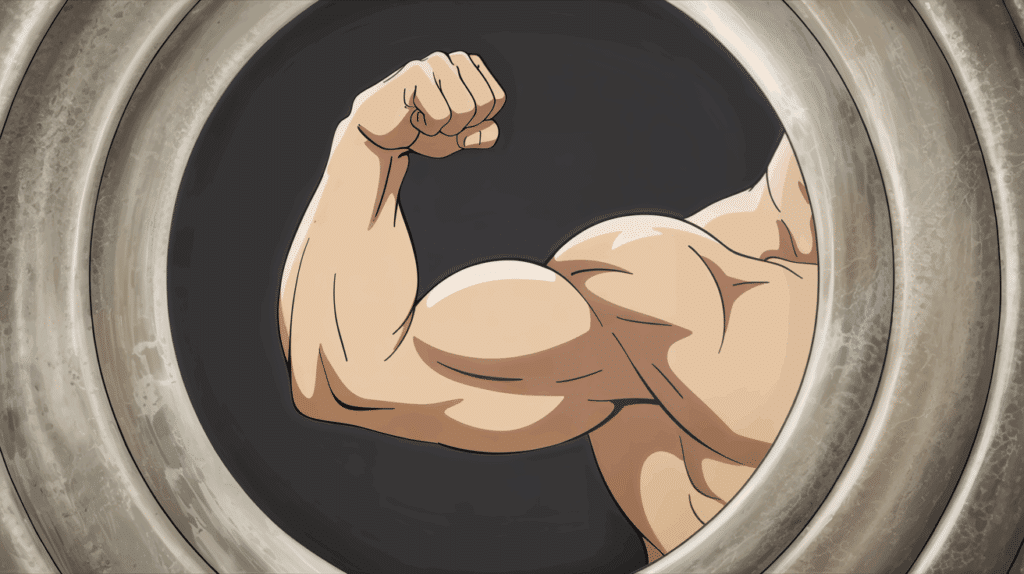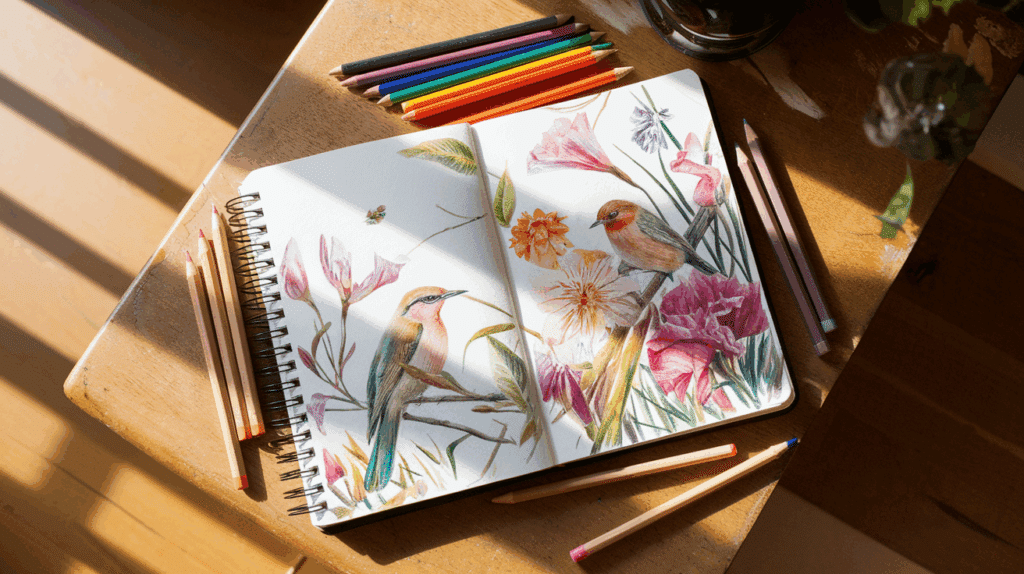Drawing pandas captures many artists’ attention. These black and white bears look simple at first glance, but creating a true-to-life panda takes skill and know-how.
Most beginners struggle with proportions and textures when they try to draw pandas. The round face, distinctive markings, and fluffy fur can be hard to get right. This leaves many people feeling frustrated with their flat, cartoon-like results.
The good news? Anyone can learn how to draw a panda that looks alive on the page. With a few key techniques and practice, artists can create pandas that seem ready to munch on bamboo.
This blog shares simple but effective tricks for drawing pandas that look lifelike. Readers will learn about proportions, shading, and texture methods that bring these beloved animals to life on paper.
Tips on How to Draw a Panda Look Lifelike
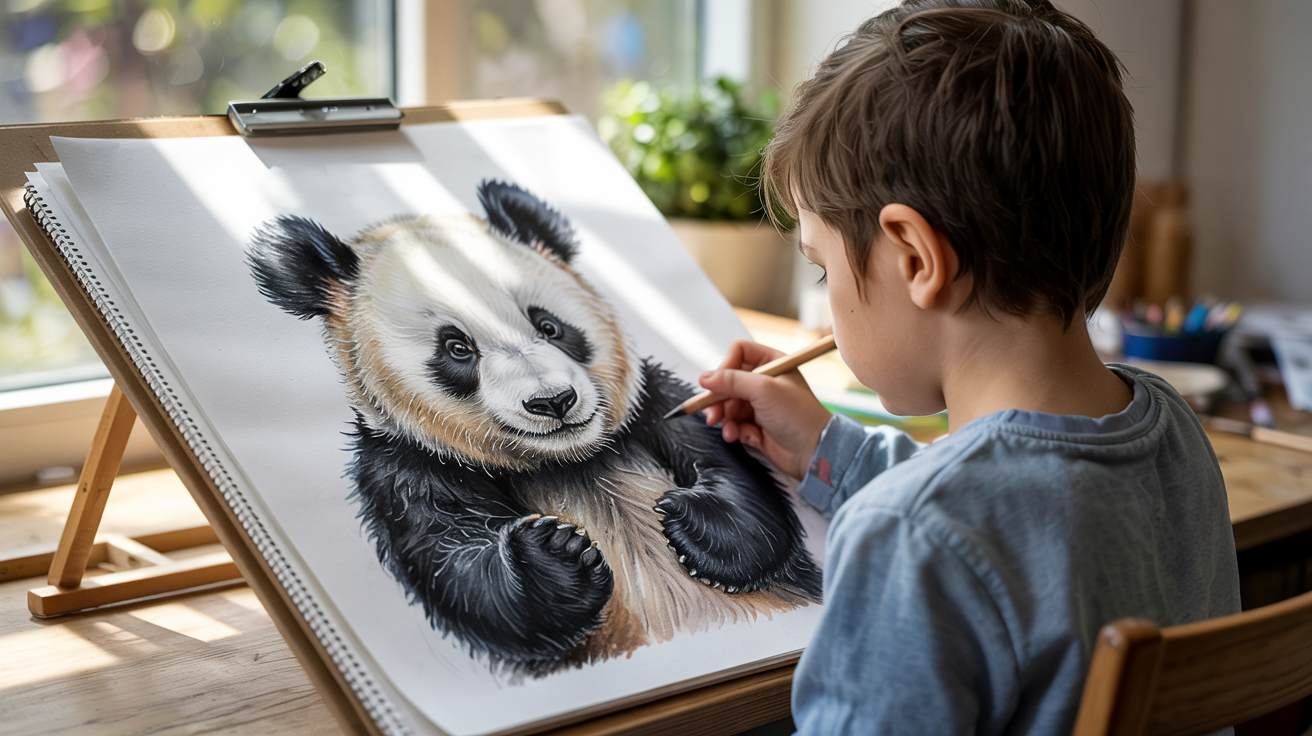
Creating a lifelike panda drawing starts with understanding the animal’s basic structure. Pandas have specific body proportions and features that make them instantly recognizable.
Many artists find that focusing on these key aspects helps turn a basic sketch into something that looks real. With practice and attention to detail, anyone can improve their panda drawings significantly.
The following tips will help artists capture the essence of these charming animals.
- Start with basic shapes: Begin by drawing simple circles and ovals to form the panda’s head and body. This helps create the right proportions before adding details. A large circle for the head and an oval for the body gives the classic panda shape that serves as the foundation.
- Study real pandas: Look at photos of real pandas to notice their true proportions. Pandas have larger heads compared to their bodies, small ears positioned high on the head, and short limbs. Studying these features helps make drawings more accurate.
- Focus on the eyes: The eyes are key to making a panda look alive. Place them far apart on the face, make them black and almond-shaped, and add a small light reflection. This small touch brings life to the drawing instantly.
- Get the markings right: The black patches around the eyes, ears, limbs, and shoulders follow specific patterns. Take time to observe these markings in reference photos and place them correctly in the drawing.
- Pay attention to texture: Pandas have thick, fluffy fur that requires special shading techniques. Use short, curved pencil strokes to show the fur’s texture, varying the pressure to create depth. This helps the panda look soft and three-dimensional.
- Add shadows and highlights: Create contrast by adding shadows where the fur would block light, like under the chin and belly. Add highlights on the top of the head, back, and areas that would catch light. This technique adds depth to the drawing.
- Show the pose and movement: Even a sitting panda has subtle movements. Slightly tilt the head, bend a paw, or show the animal mid-chew with bamboo. These small actions make the drawing feel like a captured moment rather than a static image.
Easy Steps to Draw a Realistic Panda
Drawing a panda can be a heartwarming and relaxing experience, especially when the end result captures the gentle charm of this beloved animal. With a few thoughtfully placed curves and some careful shading, even beginners can create a lifelike panda drawing.
This section breaks the process down into seven detailed steps, using soft lines and rounded forms that mimic the panda’s cuddly nature.
By the end, artists of any skill level will be able to sketch a panda that feels full of life and personality. So, gather your tools and follow along with these warm and encouraging steps to bring your panda to life.
Step 1: Sketch the Head Shape

Begin by gathering your pencil, eraser, black marker, and a clean sheet of drawing paper. It’s also helpful to keep a white gel pen nearby for highlights or corrections, and a ruler if you’d like to add bamboo later.
Start by drawing the panda’s head, aiming for a gentle mochi-like curve that is slightly narrower at the top, fuller at the sides, and flatter at the bottom. This gives the panda its characteristic chubby charm.
Make sure the curve flows naturally, without any sharp edges, to maintain softness. Using a pencil helps in refining the shape until it feels balanced and well-rounded.
Step 2: Add the Facial Features
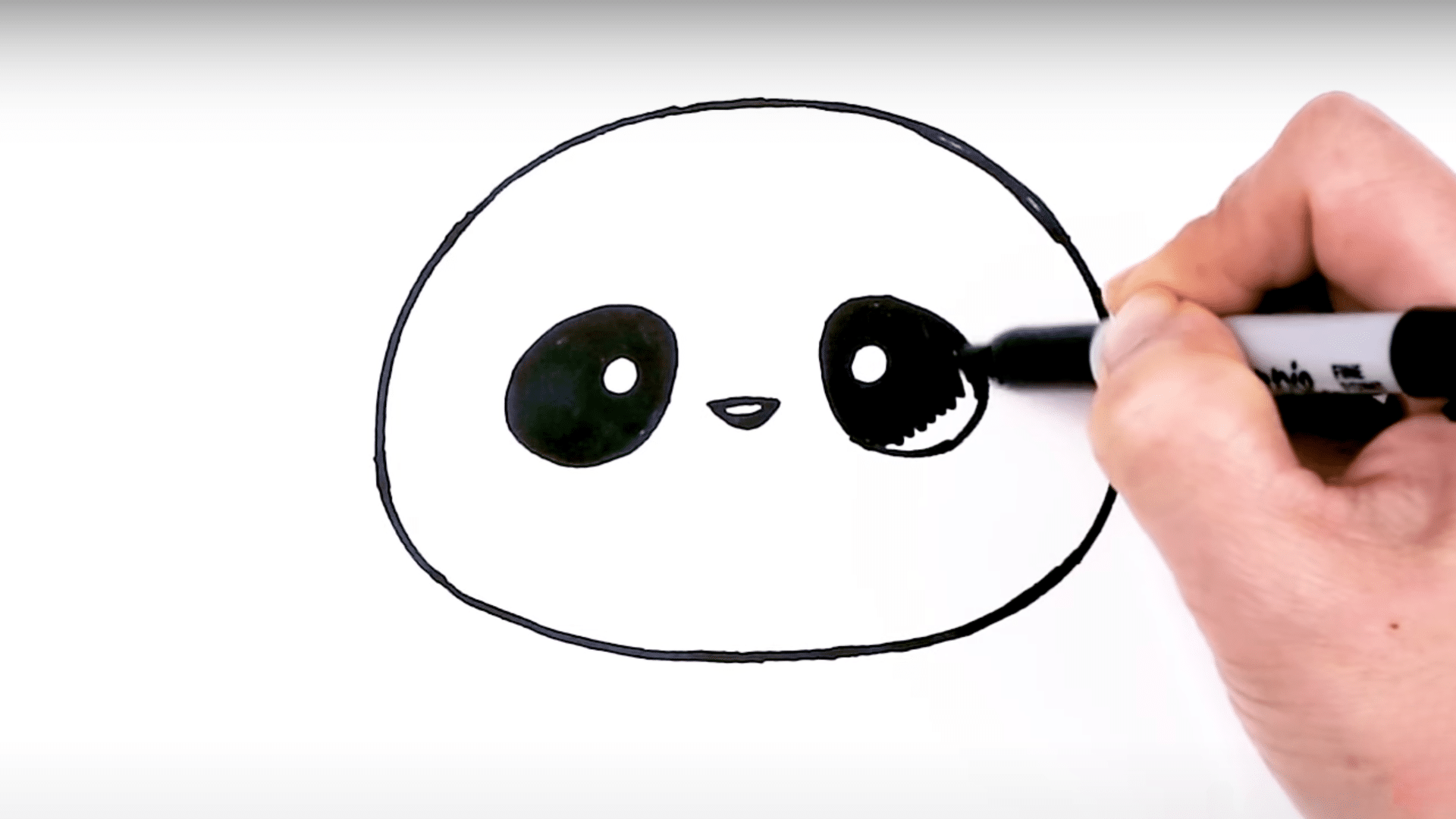
At the center of the head, lightly sketch a small curved triangle for the nose. Above this, place a tiny oval to represent a highlight, and shade around it to add depth.
Next, on either side of the face, draw large vertical ovals for the iconic panda eye patches which can be slightly wider at the bottom. Within these patches, draw a small circle for the eye and shade it in, leaving a small area unshaded to represent a light reflection.
Step 3: Shape the Mouth and Eyebrows
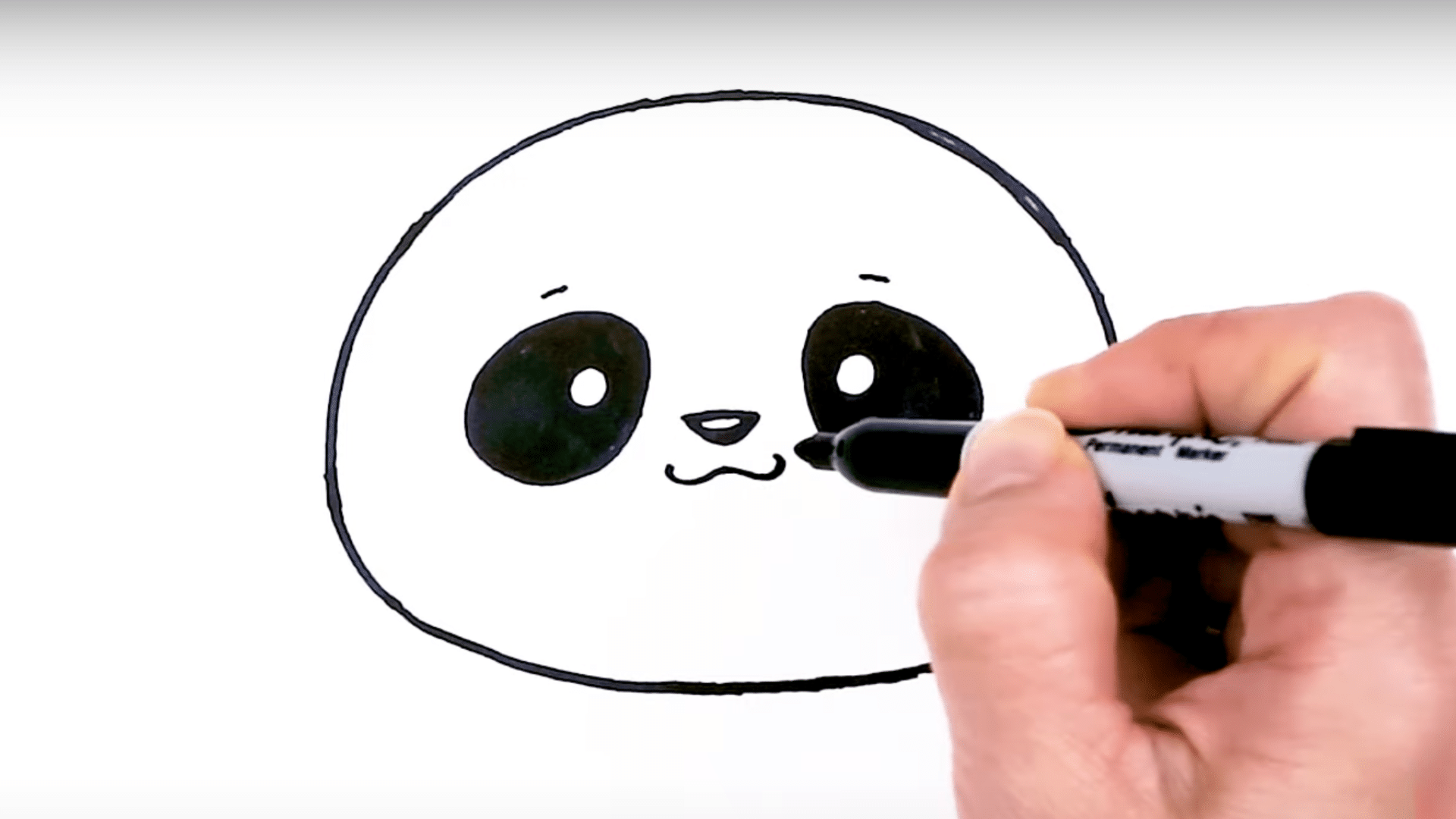
From the center point just beneath the nose, gently curve two short lines downward in a soft W or YW motion to create the smiling mouth. Above each eye, add a subtle arching line to suggest soft eyebrows, which gives your panda expression and warmth.
Keep the lines smooth and avoid harsh angles to preserve the friendly appearance. This small detail helps to give the face its tender personality.
Step 4: Draw the Ears
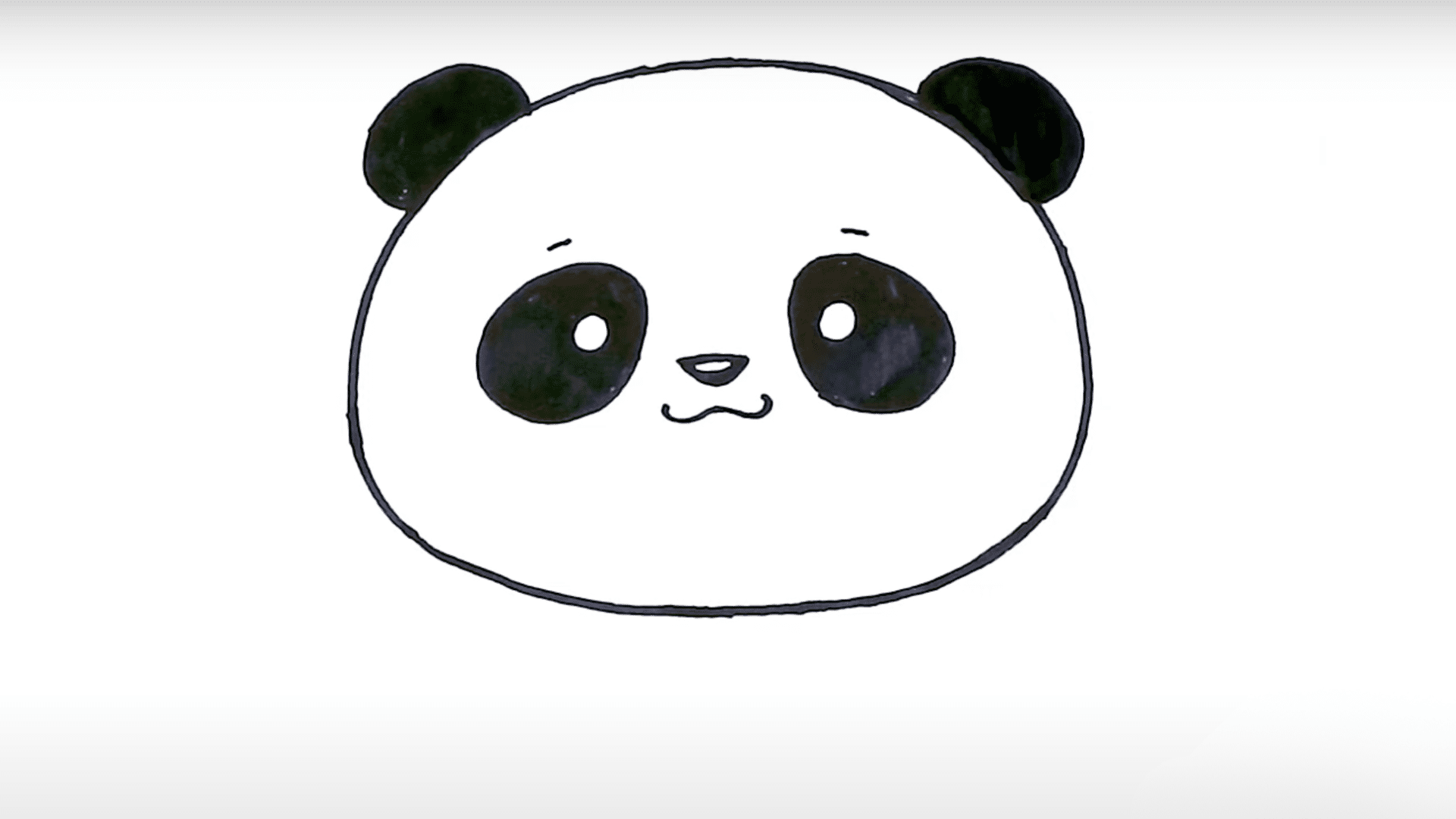
Position the ears on each side where the head starts to slope downward. Draw large rounded curves and fill them in with black to make them bold and distinguishable.
Try to keep both ears symmetrical in size and placement, curving slightly inward to give a sense of dimension. The contrast created by filling them in will add charm and make the panda’s face pop.
Step 5: Outline the Arms and Body
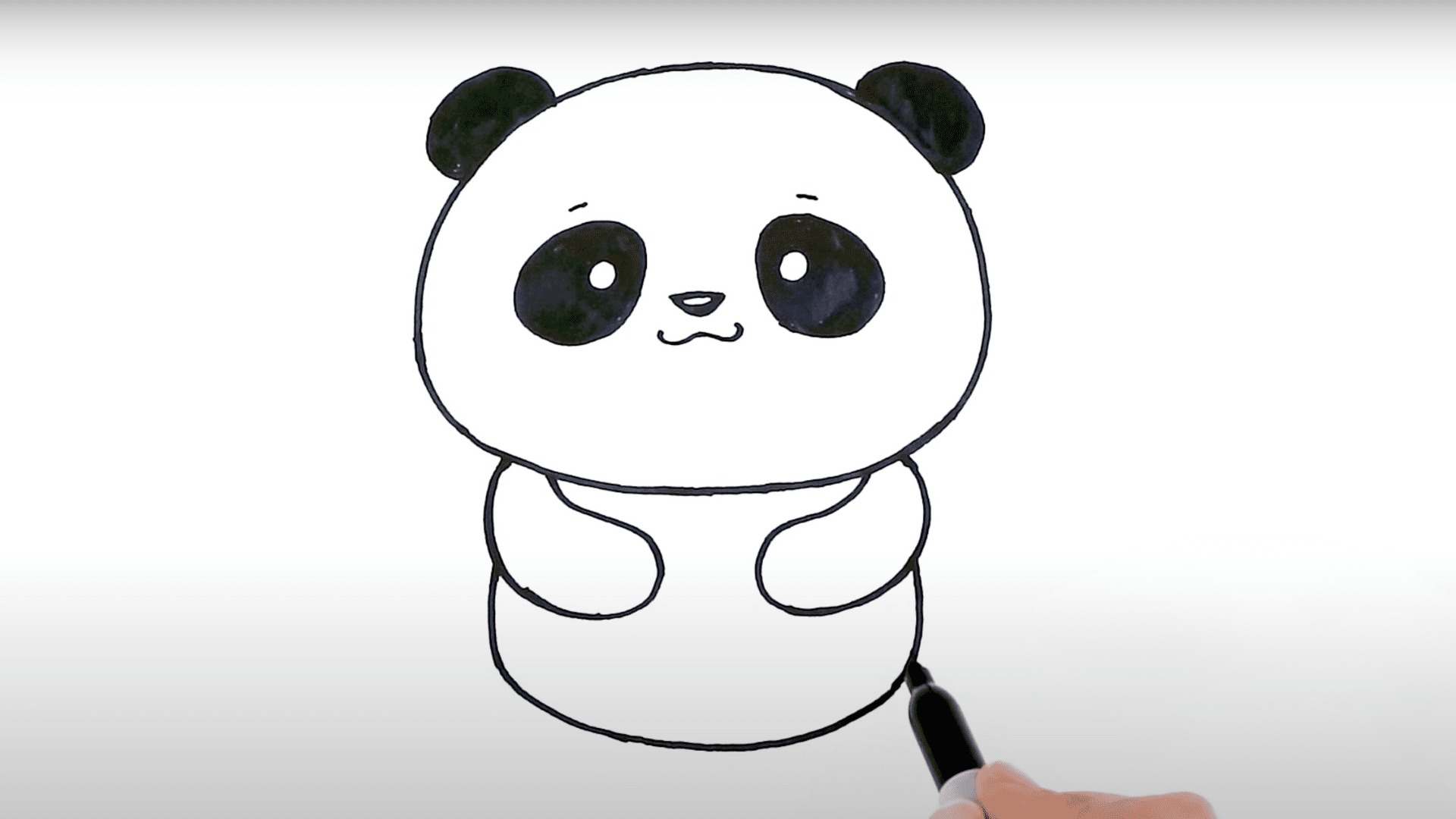
To begin the arms, place a mark just below and slightly to the side of each eye. From each point, curve the line inward and then sweep it back outward to form the soft, pudgy arms. Keep the curves wide and rounded to enhance the panda’s cuddly look.
- Draw arms close to the face to create a cozy posture
- Use rounded curves, avoiding sharp angles
- Connect the arms at the base with a large U-shaped curve to form the belly
Step 6: Add the Legs and Feet

To give the panda its complete and grounded look, it’s time to add the feet. Begin at the base of the belly, finding the center point beneath the body.
From there, extend soft curves outward on each side to create the feet, ensuring they appear gently rounded and slightly tucked in.
- Draw each foot starting just outside the body’s bottom curve
- Use smooth, downward arcs that taper inward to suggest soft toes
- Keep both feet symmetrical and close to the body to preserve the cuddly sitting pose
These rounded feet bring balance and a finished touch to your adorable panda sketch.
Step 7: Bamboo and Details as an Optional Touch

To make the drawing more lively, sketch a slanted bamboo stalk between the panda’s arms. Start at one hand, extending the stalk diagonally downward and through the paws.
Add horizontal ridges along the bamboo to make it more realistic, and draw a few long pointed leaves near the top. For a final personal touch, you can add a small heart beside the panda or use a white pen to add light details or correct lines.
How to Avoid Panda Drawing Mistakes

Drawing pandas can be tricky even for those with some art experience. Many common mistakes can make a panda look unnatural or cartoon-like rather than lifelike.
Artists often struggle with certain aspects of panda anatomy and features that seem simple but require careful attention. Being aware of these potential pitfalls helps create more realistic results.
Here are some common mistakes to avoid when drawing pandas.
- Incorrect proportions: Many artists draw pandas with bodies that are too small for their heads. A panda’s head should be large, but the body needs proper bulk too. Make sure to give the panda a stocky, rounded body that matches its head size for a more accurate look.
- Symmetrical facial features: Nature isn’t perfectly symmetrical. Placing eyes, ears, and markings in exact mirror positions makes a panda look artificial.
- Flat, uniform coloring: Using solid black and white areas without shading makes pandas look flat. Instead, add subtle variations with different pencil pressures, showing that even black fur has highlights and shadows.
- Stiff, rigid lines: Hard, straight lines make pandas look stiff and unnatural. Use curved, flowing lines that follow the form of the body to show the softness of the animal. This helps capture the rounded, plush quality of a real panda.
- Missing the subtle details: Small details like the pink nose, slight wrinkles around the mouth, and texture of the paw pads make a big difference. These tiny elements add life to the drawing and show the viewer that care was taken with every part of the image.
- Forgetting about the environment: A panda floating in white space looks less real than one shown in a setting. Even simple ground shadows or a hint of bamboo helps place the panda in context and adds to the lifelike quality of the drawing.
- Rushing the process: Many artists try to finish too quickly, skipping important steps like the initial shape layout. Take time with each stage of the drawing, from basic shapes to final details. Patience leads to better results and a more lifelike panda.
Conclusion
Drawing pandas that look lifelike takes practice, but anyone can master it with the right techniques. The tips shared in this blog help artists avoid common mistakes while capturing the charm of these black and white bears.
Remember that creating realistic pandas comes down to proper proportions, attention to fur texture, and careful shading. These elements work together to bring drawings to life.
When someone learns how to draw a panda correctly, they gain skills that apply to other animal drawings too. The basics of observation, shape building, and shading transfer to many subjects.
With each attempt, drawings will improve. The key is to keep practicing, refer to reference photos often, and be patient with the process.
Soon enough, those panda drawings will look ready to munch on bamboo.





